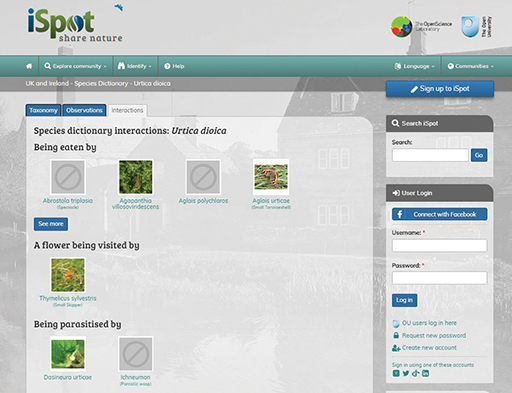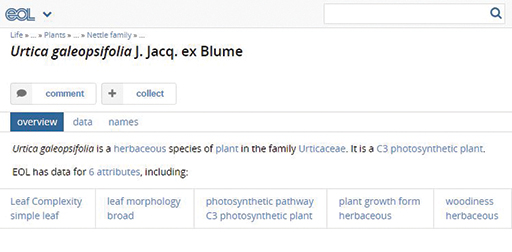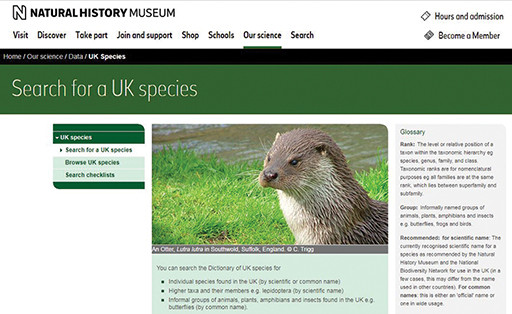4 Researching further information about a species
What I have found so far on iSpot is great, and I’m starting to build a picture of the species. I now know more about its taxonomy, where other people have recorded observations of it and which other species it interacts with. But I still have some unanswered questions, and, for that, I’ll need to look elsewhere.
Activity 1 Searching for information and defining your questions
Imagine you’re planning to conduct further research on a species whose name you have just confirmed via iSpot.
- What type of questions would you ask in order to learn more about the species?
- What sources of information would you use and how would you use them to search for this information?
Answer
- Some commonly asked questions include: What species is it? What are its characteristics and does the example recorded fit? What is its distribution in the local area or the world? What are the species’ economic uses, if any? And sometimes, what is its presence in mainstream media?
- Check first to see if any information is available from credible, international, professional organisation databases (websites) such as the UK’s National Biodiversity Network [Tip: hold Ctrl and click a link to open it in a new tab. (Hide tip)] and the Global Biodiversity Information Facility. Scientific literature can be obtained from peer-reviewed publications that are often listed in databases such as Web of Science.
I was keen to find a more in-depth discussion about the species, especially its description, so I clicked on the link directly under the ‘Likely ID’ in my iSpot observation, which took me to a page on the website of the Encyclopedia of Life, an international publisher of academic work and a project collaborator with iSpot. The page contained a number of interesting facts.
Here I found out more about the nettle family – what kinds of habitats it grows in, where in the world it is native and invasive, as well as information about the biology of the plant itself such as the shape of the leaf and the height of the plant. I also checked out the record on another global database – Global Biodiversity Information Facility – which gave me similar information with a world distribution map.
My next stop was the UK’s Natural History Museum’s UK Species Inventory Dictionary, which is one of the dictionaries integrated within iSpot’s species dictionary. As part of the UK’s esteemed Natural History Museum, I thought they would have credible information about the species. The result is shown in Figure 5.
I then decided to Google search ‘Urtica dioica’ to find out more information about the stinging nettle. This led me to explore Wikipedia, which is a major source of information, although care should be taken when consulting it as it is editable by anyone and mistakes can creep in. Nevertheless, from Wikipedia I was fascinated to learn of the culinary uses of nettles as well as for textiles and gardening.



